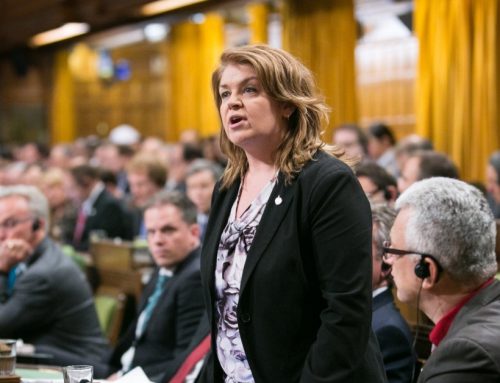Dear Friends,
Here is some useful content that may answer many of your questions.
Here are the topics covered:
- The vaccination rollout
- Health Canada label change authorization for Pfizer-BioNTech
- COVID-19 vaccine
- Testing for foreign variants
- New rules for travellers
- Self-employed individual who applied for the CERB
- Interest relief on 2020 income tax debt due to COVID-19
- Public Transit Funding Announcement
We wrote this content in a question and answer format.
When and Where will I be vaccinated?
Last week was effectively the last week of the Pfizer slowdown and vaccines will once again be entering the country in greater numbers this week. So vaccination in the community starting with those 80 and over should start shortly.
Public vaccinations will be carried out in the following order of priority, as determined by the Government of Quebec:
- 80 years old and up
- 70 to 79
- 60 to 69
- Adults under 60 with risk of complications from COVID-19
- Essential workers and other healthcare workers
- Other adults
To find out more about vaccination in our region, see the following page of the CIUSSS Montérégie Centre (French only): https://www.santemonteregie.qc.ca/en/node/16007
Why have we fallen so far down on the per capita list of vaccinations? Is this temporary or permanent? Why has there been a delay in vaccine delivery and when does Canada expect the number of vaccines delivered to Canada to pick up?
This is temporary. There was a four-week retooling at Pfizer’s plant in Belgium and they reduced deliveries over this period. The goal was to increase their capacity. Last week was the last week of the slowdown and the Pfizer vaccines start entering the country in greater and greater numbers starting this week. We have stated from the beginning that there would be 6,000,000 doses in Canada by March 31st and as you will see from the numbers below we are on track to meet this committed number.
Last week, the Prime Minister provided an update on Canada’s purchasing of vaccines, and last Thursday Major-General Dany Fortin, the military commander leading the country’s COVID-19 vaccine logistics, hosted a press conference on topic as well.
Here are the main points from both:
Pfizer Vaccine:
403,000 doses of the Pfizer vaccine in the week of February 15th
475,000 does of the Pfizer vaccine in the week of February 22nd
444,000 doses in the week of March 1st
444,000 doses in the week of March 8th
Numbers to be confirmed for last two weeks of March but we will have received 4,000,000 doses of Pfizer vaccine by end of March.
Canada will have a total of 10.8 million doses of Pfizer delivered between April and June, and all of our remaining 23.2 million doses of Pfizer will arrive in Q3.
With Pfizer alone, we will receive 40 million doses by the end of September.
Moderna Vaccine:
Next Moderna shipment to arrive the week of February 22nd of 168,000 doses
The remainder of the 2,000,000 doses yet to be delivered in Q1 will be delivered in March, with exact dates still awaiting to be firmed up.
We will receive at least 9.2 million Moderna doses between April and June.
In addition, the 40,000,000 Moderna doses already purchased, we have purchased 4 million doses more of the Moderna vaccine. These doses will arrive over the summer.
Everyone who wishes to be vaccinated will be vaccinated by the end of September. Many of you will be vaccinated over the next month or two if you fall in an earlier priority group.
While we have fallen on the per capita list due to the month long slowdown we will rapidly climb the list again as more vaccines come in and I encourage you to wait to see the list at March 31 and once again at the end of each following month and you will see us climb each month and be much higher up on the global list.
What is happening with other vaccine candidates? Will the dates above move forward if we approve other vaccines?
Yes they will. We have at least three vaccines in approval phase at Health Canada and indications are the Oxford vaccine is in the very last stages of approval. We have 20,000,000 doses of Oxford that have already been purchased and the first shipments should arrive soon after approval.
Given the amount of misinformation circulating on so many issues I suggest everyone read the interview with the non-partisan co-chair of Canada’s vaccine task force who explains the history of their work and counters a number of rumours circulating:
https://www.cbc.ca/news/politics/joanne-langley-task-force-covid-coronavirus-vaccine-1.5910452
What does the Health Canada label change authorization for Pfizer-BioNTech COVID-19 vaccine mean?
Last week, Health Canada issued a label change authorization to Pfizer-BioNTech to reflect that each vial of its COVID-19 vaccine contains six doses, rather than five. This follows an independent and thorough scientific review of a submission received from Pfizer-BioNTech on January 22, 2021. In its review, Health Canada determined that six full doses can be consistently obtained from vials with the use of low dead-volume syringes.
Health Canada had previously acknowledged that with the right technique and syringe it is possible to obtain a sixth dose from the vial. Health Canada and other international regulators require vaccine vials to include a certain amount of overfill to ensure there is sufficient vaccine in each vial to yield the expected doses. Health Canada has determined that there will still be an acceptable amount of overfill following the label change.
While the label change comes into effect immediately, shipments of Pfizer-BioNTech vaccine to provinces have already begun and are calculated at five doses per vial. Future shipments of the vaccine to Canada will reflect the newly approved monograph. The Government of Canada will continue working with provinces to ensure they have the support and supplies they need to ensure effective implementation.
As part of this label change authorization, Health Canada has issued terms and conditions to Pfizer-BioNTech. The manufacturer is required to provide continued educational support to vaccine administration sites in Canada, if needed, to facilitate implementation of the six dose per vial label change, and to work closely with Public Services and Procurement Canada to acquire syringes, if required. A detailed list of terms and conditions is available here.
We understand that testing for foreign variants is a provincial responsibility but what is the federal government doing to help them?
We announced that we will invest $53 million in an integrated Variants of Concern Strategy. This will help rapidly scale up our surveillance, sequencing and research efforts.
The Government of Canada is working with provinces and territories and the Canadian COVID Genomics Network (CanCOGeN) to rapidly scale up sequencing and scientific efforts to detect known and potentially emerging COVID-19 virus variants of concern. This national strategy brings together public health and genomic sequencing along with epidemiology, immunology, virology, and mathematical modelling. Through this partnership, we are leveraging existing laboratories and expertise to drive public health investigations and take public health action rapidly.
This partnership involves the Public Health Agency of Canada’s (PHAC) National Microbiology Laboratory (NML), Health Canada, Genome Canada and the Canadian Institutes of Health Research (CIHR). To implement the Strategy, PHAC’s NML is providing $20 million and CanCOGeN is providing $8 million to increase genomic sequencing and real-time data sharing capacity. CIHR is providing up to $25 million to scale up Canadian research to increase our understanding of emerging variants and provide decision makers with rapid guidance for drug therapy, vaccine effectiveness, and other public health strategies.
Funding will expand upon existing public health networks to establish regional clinical and public health teams to quickly identify and characterize variants of concern. Through the Strategy, we will also standardize data sharing across Canada and facilitate the access of information on the variants from national and international databases. This rapid sharing of information with researchers is imperative to an effective international response to the variants of concern. The funding will also create a research network to complement surveillance efforts and public health actions as part of an integrated team, and provide key information on the biological relevance of the variants to inform public health decisions.
The Variants of Concern Strategy is part of our science and evidence based response to the COVID-19 pandemic. As COVID-19 virus variants of concern continue to emerge, Canada will be prepared to detect, track, and treat these new cases.
To keep each other safe, Canadians should continue to practice public health measures, and should get tested if they experience symptoms.
I am a snowbird and confused as to what the new rules on air and land return will be. Can you explain?
As of February 15, 2021, all travellers, with some exceptions, arriving to Canada by land, will be required to provide proof of a negative COVID-19 molecular test result taken in the United States within 72 hours of pre-arrival, OR a proof of a positive test result within 14 and 90 days prior to arrival. This is consistent with the requirements already in place for air travellers. Essential workers such as truckers and emergency service providers, as well as cross border communities, will be exempt from this requirement. Further information on exemptions will be available in the coming days.
The list of acceptable molecular tests are found at:
https://travel.gc.ca/travel-covid/travel-restrictions/flying/covid-19-testing-travellers-coming-into-canada
In addition, as of February 22, 2021, travellers entering Canada at the land border will be required to take a COVID-19 molecular test on arrival as well as toward the end of their 14-day quarantine. The Government of Canada will run 16 testing sites at point of entry across Canada. Five ports of entry will initially be available (see below) with 11 additional as of March 4 (see below). The Government of Canada is also working to supply all other ports of entry with test kits for travellers to take to meet these requirements.
For travellers arriving to Canada by air
As of February 22, 2021, all air travellers, with some exceptions, will be required to take a COVID-19 molecular test when they arrive in Canada before exiting the airport, and another toward the end of their 14-day quarantine period. With limited exceptions, air travellers, will also be required to reserve prior to departure to Canada, a 3-night stay in a government-authorized hotel. Travellers will be required to stay at their reserved hotel , at their own cost, while they await the results of their arrival test. This could be up to 3 days but test results will hopefully come in faster.
Hotel booking information will be available online as of February 18, 2021. Travellers will need to book a hotel in the city in which they first arrive in Canada. If they receive a negative result on their arrival test, they will be able to take a connecting flight to their final destination. There will be a number of hotels to choose from near each of the four international airports accepting international flights, in Vancouver, Calgary, Toronto and Montreal. Costs of these hotel stays may vary slightly at each location. It is up to the traveller to choose where they wish to stay and book in advance of departure. The price will include costs associated with the room, food, cleaning, infection prevention and control measures, and security as well as transportation. These new measures are in addition to existing mandatory pre-boarding and health requirements for air travellers.
Finally, at the same time on February 22, 2021, all travellers, whether arriving by land or air will be required to submit their travel and contact information, including a suitable quarantine plan, electronically via ArriveCAN before crossing the border or boarding a flight. All travellers arriving to Canada must also continue to submit COVID-related information electronically daily throughout the quarantine period. For a quarantine location to be deemed suitable, travellers cannot stay with at-risk subpopulations including people who work in hospitals or long-term care facilities, adults over the age of 65, or those who are immunocompromised or at risk for more severe disease outcomes. In addition, travellers must avoid all contact with other in their household with whom they did not travel.
Five Land Ports of Entry with onsite testing as of February 22, 2021
- Douglas, British Columbia
- Coutts, Alberta
- Queenston-Lewiston Bridge, Niagara-on-the-Lake, Ontario
- St. Bernard de Lacolle (Highway 15), Quebec
- St Stephen 3rd Bridge, New Brunswick
Additional 11 Land Ports of Entry with onsite testing as of March 4, 2021
- Ambassador Bridge, Windsor, Ontario
- Blue Water Bridge, Point Edward, Ontario
- Emerson West Lynne, Manitoba
- Fort Erie (Peace Bridge), Ontario
- Huntingdon, British Columbia
- Lansdowne (Thousand Islands Bridge), Ontario
- Pacific Highway, British Columbia
- Rainbow Bridge, Niagara Falls, Ontario
- St-Armand, Quebec
- Stanstead (Route 55), Quebec
- Windsor-Detroit Tunnel, Ontario
I was a self-employed individual who applied for the CERB based on my gross income (rather than net) being $5000+ and was sent a letter stating I might have to pay back the funds. What was announced this week?
The Government of Canada announced that self-employed individuals who applied for the Canada Emergency Response Benefit (CERB) and would have qualified based on their gross income will not be required to repay the benefit, provided they also met all other eligibility requirements. The same approach will apply whether the individual applied through the Canada Revenue Agency or Service Canada.
This means that, self-employed individuals whose net self-employment income was less than $5,000 and who applied for the CERB will not be required to repay the CERB, as long as their gross self-employment income was at least $5,000 and they met all other eligibility criteria.
Some self-employed individuals whose net self-employment income was less than $5,000 may have already voluntarily repaid the CERB. The CRA and Service Canada will return any repaid amounts to these individuals. Additional details will be available in the coming weeks.
I am very pleased about this decision as I had constituents in this situation who made a good faith error based on information they were initially given by CRA.
What are the details of the Government’s announcement about interest relief on 2020 income tax debt due to COVID-19 related income support?
The Government of Canada recently announced we will provide targeted interest relief to Canadians who received COVID-related income support benefits.
Once individuals have filed their 2020 income tax and benefit return, they will not be required to pay interest on any outstanding income tax debt for the 2020 tax year until April 30, 2022. This will give Canadians more time and flexibility to pay if they have an amount owing.
To qualify for targeted interest relief, individuals must have had a total taxable income of $75,000 or less in 2020 and have received income support in 2020 through one or more of the following COVID-19 measures:
- Canada Emergency Response Benefit (CERB)
- Canada Emergency Student Benefit (CESB)
- Canada Recovery Benefit (CRB)
- Canada Recovery Caregiving Benefit (CRCB)
- Canada Recovery Sickness Benefit (CRSB)
- Employment Insurance benefits or similar provincial emergency benefits
The Canada Revenue Agency (CRA) will automatically apply the interest relief measure for individuals who meet these criteria.
Additionally, any CRA-administered credits and benefits normally paid monthly or quarterly, such as the Canada Child Benefit and the goods and services tax/harmonized sales tax credit will not be applied to reduce individuals’ tax debt owing for the 2020 tax year. Canadians are strongly encouraged to file their tax returns by the filing deadline to ensure that their benefit payments continue without interruption.
I heard there was a Public Transit Funding Announcement this week. What does it mean?
Our government announced $14.9 billion for public transit projects over the next eight years, which includes permanent funding of $3 billion per year for Canadian communities beginning in 2026-27. This announcement provides cities and communities the predictable transit funding they need to plan for the future, and is part of our plan to create one million jobs, fight climate change, and rebuild a more sustainable and resilient economy.
These investments will:
- Help Canadians move around easier and create new jobs by building major public transit projects, providing dedicated planning funding to accelerate future major projects, and supporting the expansion of large urban transit systems that many Canadians depend on every day.
- Reduce pollution and create jobs for Canadians by enhancing public transit systems and switching them to cleaner electrical power, including supporting the use of zero-emission vehicles and related infrastructure, complementing the work of the Canada Infrastructure Bank.
- Support healthy lifestyles in our communities and meet the growing demand for active transportation projects, including by building walkways and paths for cycling, walking, scooters, e-bikes, and wheelchairs.
- Help Canadians living in rural and remote areas travel to and from work more easily and access essential services, by working with rural, remote, and Indigenous communities to identify and create transit solutions that meet their needs.
- Support our cities and communities by making a permanent and stable federal commitment to funding public transit, and facilitate partnerships between all orders of government, Indigenous communities, transit agencies, and other stakeholders to develop an approach to permanent public transit funding in a manner that offers the greatest benefits to Canadians.
Investing in public transit infrastructure will build strong communities across the country and deliver a better quality of life for all Canadians. The government will continue to invest in projects that best support our recovery, create middle class jobs and economic growth, and help us reach our climate targets. Together, we can create a Canada that is cleaner, more competitive, and more resilient for generations to come.







Leave A Comment